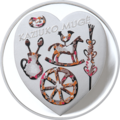
Palm Sunday is the Christian moveable feast that falls on the Sunday before Easter. The feast commemorates Christ's triumphal entry into Jerusalem, an event mentioned in each of the four canonical Gospels. Its name originates from the palm branches waved by the crowd to greet and honor Jesus Christ as he entered the city. Palm Sunday marks the first day of Holy Week; in Western Christianity, this is the beginning of the last week of the solemn season of Lent, preceding Eastertide, while in Eastern Christianity, Holy Week commences after the conclusion of Great Lent.
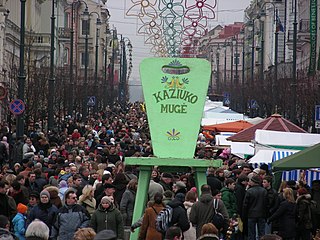
Kaziuko mugė or Saint Casimir's Fair is a large annual folk arts and crafts fair in Lithuania, dating to the beginning of the 17th century. The fair is traditionally held in city's markets and streets on the Sunday nearest to 4 March, the anniversary of Saint Casimir's death. In Lithuanian, Kaziukas is a diminutive of Casimir. Today, Saint Casimir's fair also features music, dance, theater performances; it attracts tens of thousands of visitors and many craftsmen from across Lithuania as well as from neighbouring countries such as Latvia, Russia, and Poland. In recent years, the fair has expanded into other cities in Lithuania, Belarus, Poland.

Marzanna, Morė, Marena, Mara, Morana, Morena or Mora is a pagan Slavic goddess associated with seasonal rites based on the idea of death and rebirth of nature. She is an ancient goddess associated with winter's death, rebirth and dreams. In ancient Slavic rites, the death of the Goddess Marzanna at the end of winter becomes the rebirth of Spring of the Goddess Kostroma (Russian), Lada or Vesna representing the coming of Spring.
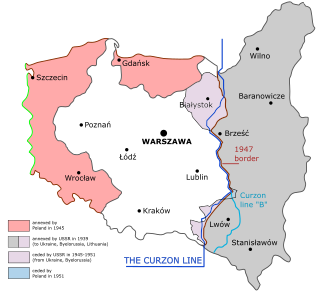
Eastern Borderlands or simply Borderlands was a term coined for the eastern part of the Second Polish Republic during the interwar period (1918–1939). Largely agricultural and extensively multi-ethnic with a Polish minority, it amounted to nearly half of the territory of interwar Poland. Historically situated in the eastern Polish–Lithuanian Commonwealth, following the 18th-century foreign partitions it was divided between the Empires of Russia and Austria-Hungary, and ceded to Poland in 1921 after the Treaty of Riga. As a result of the post-World War II border changes, all of the territory was ceded to the USSR, and none of it is in modern Poland.

Pussy willow is a name given to many of the smaller species of the genus Salix when their furry catkins are young in early spring. These species include :

The House of Czartoryski is a Polish princely family of Lithuanian-Ruthenian origin, also known as the Familia. The family, which derived their kin from the Gediminids dynasty, by the mid-17th century had split into two branches, based in the Klevan Castle and the Korets Castle, respectively. They used the Czartoryski coat of arms and were a noble family of the Polish–Lithuanian Commonwealth in the 18th century.
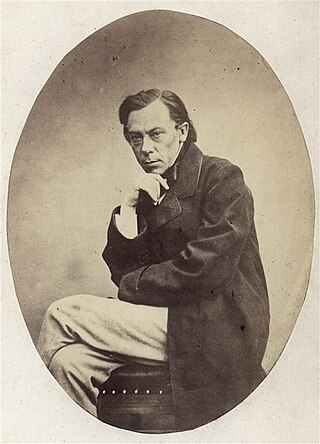
Ludwik Władysław Franciszek Kondratowicz, better known as Władysław Syrokomla, was a Polish romantic poet, writer and translator working in Vilnius and Vilna Governorate, then Russian Empire, whose writings were mainly dedicated to the former Grand Duchy of Lithuania. In his writings, Syrokomla called himself a Lithuanian but was disappointed by his inability to speak the Lithuanian language.

Vilnius Region is the territory in present-day Lithuania and Belarus that was originally inhabited by ethnic Baltic tribes and was a part of Lithuania proper, but came under East Slavic and Polish cultural influences over time.

Šakotis is a Polish, Lithuanian and Belarusian traditional spit cake, similar to the German Baumkuchen. It is a cake made of butter, egg whites and yolks, flour, sugar, and cream, cooked on a rotating spit in an oven or over an open fire.

Wycinanki in Poland or Vytynanky (Витина́нки) in Ukraine or Vycinanki (Выцінанкі) in Belarus, is a Slavic version of the art form of papercutting, popular in Belarus, Poland, and Ukraine.

The tradition of egg decoration in Slavic cultures originated in pagan times, and was transformed by the process of religious syncretism into the Christian Easter egg. Over time, many new techniques were added. Some versions of these decorated eggs have retained their pagan symbolism, while others have added Christian symbols and motifs.
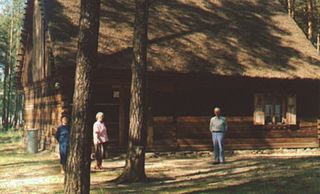
Kurpie is one of a number of ethnic regions in Poland, noted for its unique traditional customs, such as its own types of traditional costume, traditional dance and distinctive type of architecture and livelihoods. Kurpie is also the name of the people of this culture.
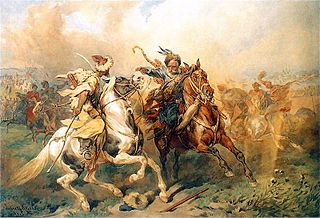
The Lipka rebellion was a mutiny from 1672 of several cavalry chorągwie (regiments) of Lipka Tatars, who had been serving in the forces of the Polish–Lithuanian Commonwealth since the 14th century. The immediate cause of the rebellion was overdue pay, although increasing restrictions on their established privileges and religious freedom also played a role.
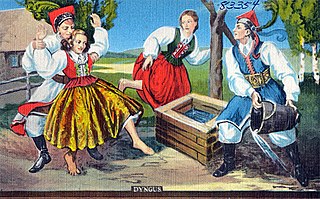
Śmigus-dyngus or lany poniedziałek is a celebration held on Easter Monday across Central Europe, and in small parts of Eastern and Southern Europe. The tradition is widely associated with Poland and is observed by Polish Diaspora communities, particularly among Polish Americans who call it Dyngus Day.

Beheading the Kite is a Kashubian Midsummer Eve custom of ritually beheading a kite, a bird which in the Kashubian region used to symbolize evil. Since mid-19th century the ritual has become a part of Midsummer Eve, Whit Sunday or Corpus Christi celebrations. After all the residents have gathered, the village elder and village council publicly condemned the captured kite, blaming it for evil deeds, and sentenced it to death by beheading. Whenever a kite could not be captured alive, a hen or a crow could be used instead.
Aleksander Piotr Mohl, Count, was a Polish military officer, diplomat and intelligence officer.
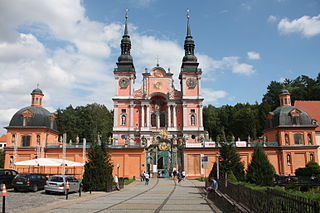
Święta Lipka Sanctuary, in English known as the Holy Linden, is a Roman Catholic basilica located in the small village of Święta Lipka, in northeastern Poland. It is a pilgrimage site and a holy shrine dedicated to the Virgin Mary. Built during the late 17th century, the basilica is an example of Baroque architecture in Poland and in the world. It is also known for its moving pipe organ.

Podłaźniczka, polazňička is Polish and Slovakian Christmas decoration. It was usually made of the top of a conifer tree turned upside down, which was then decorated with tissue paper, candies, apples, nuts, typical Polish świats, or of straw. This decoration was then hung over the Vigil table or in a corner. It was supposed to bring luck and prosperity to the household. Podłaźniczka originates from the tradition of połaźnik.

Easter in Poland, a public holiday, is one of that country's major holidays, often compared in importance to Christmas. Associated with it are many specific customs and traditions.
Juozas Kudirka was a Lithuanian ethnologist, habilitated doctor of sciences in humanities.







